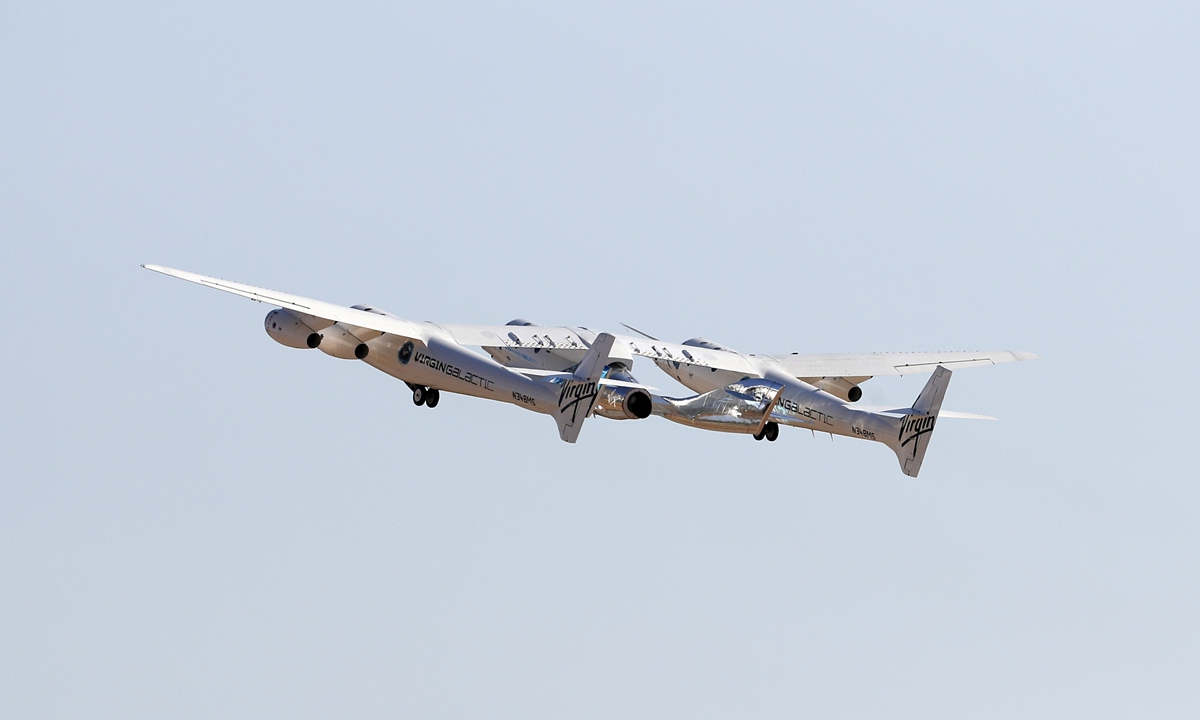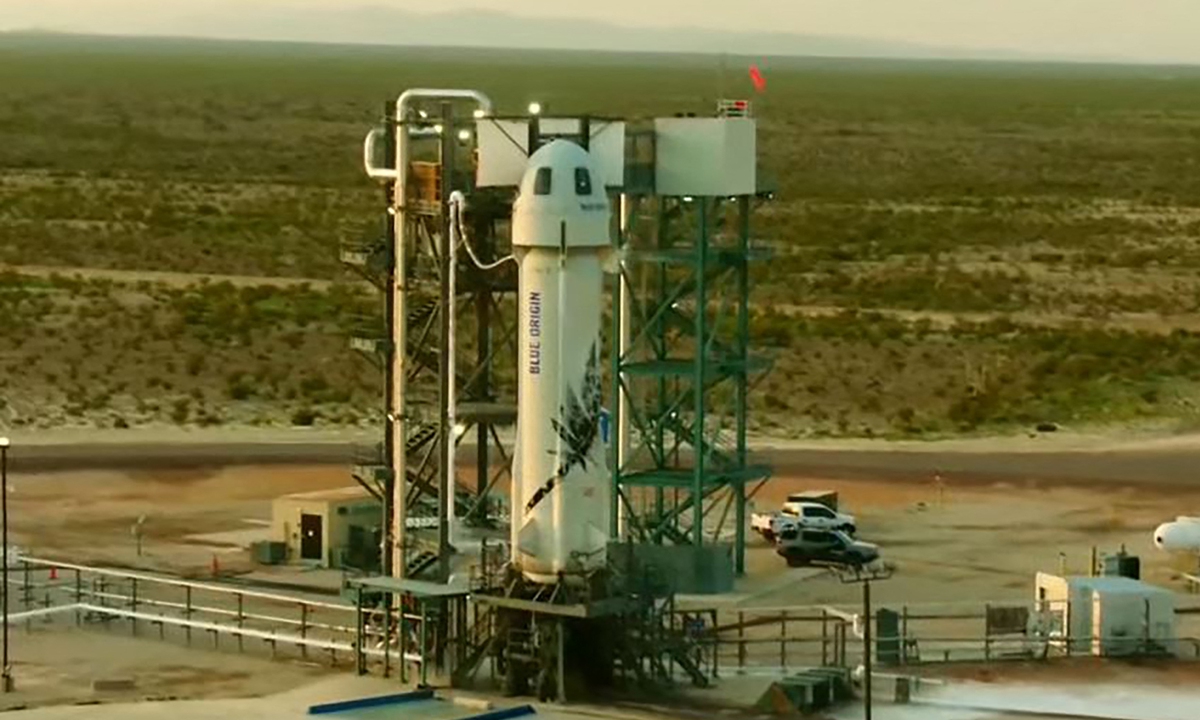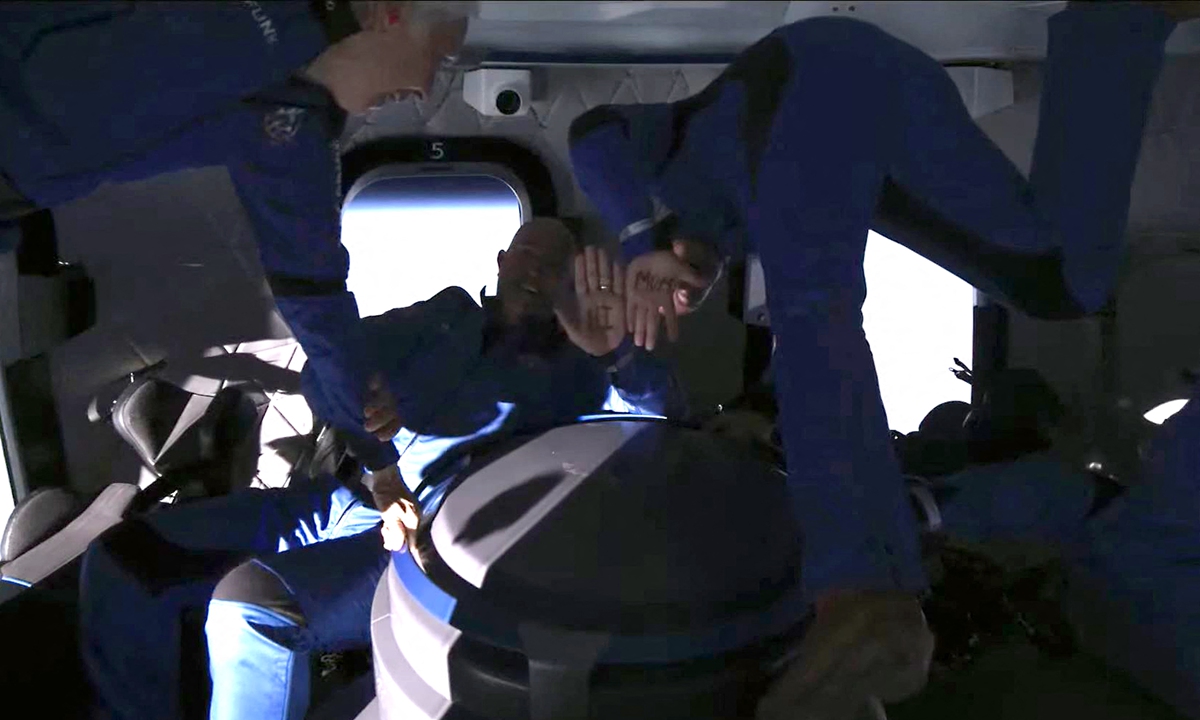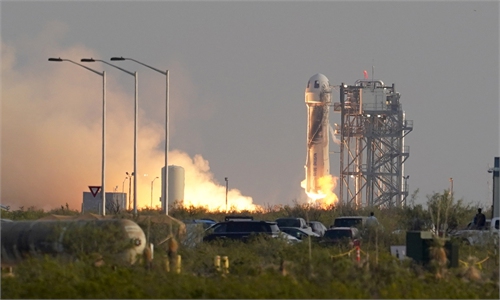TRAVEL / FEATURE
Space tourism lifts off
Environmental concerns continue to grow over stellar voyages

The rocket plane carrying Virgin Galactic founder Richard Branson and other crew members flies toward space on July 11. Photo: VCG
After years of waiting, Richard Branson's journey to space earlier this month on a Virgin Galactic vessel was supposed to be a triumphant homecoming. Instead, the jaunt attracted significant criticism - about its carbon footprint.
With Earth's wealthiest man Jeff Bezos spent a few minutes outside the planet's atmosphere Tuesday on Blue Origin, and Elon Musk's SpaceX planning an all-civilian orbital mission in September, the nascent space tourism industry finds itself facing tough questions about its environmental impact.
Right now, rocket launches as a whole don't happen often enough to pollute significantly.
"The carbon dioxide emissions are totally negligible compared to other human activities or even commercial aviation," NASA's chief climate advisor Gavin Schmidt said.
But some scientists are worried about the potential for longer term harm as the industry is poised for major growth, particularly impacts to the ozone layer in the still poorly understood upper atmosphere.
Virgin Galactic, which came under fire in op-eds on CNN and Forbes, as well as on social media, for sending its billionaire founder to space for a few minutes in a fossil fuel-guzzling spaceship, says its carbon emissions are about equivalent to a business-class ticket from London to New York.
The company "has already taken steps to offset the carbon emissions from its test flights and is examining opportunities to offset the carbon emissions for future customer flights, and reduce our supply chain's carbon footprint," it said in a statement.
But while transatlantic flights carry hundreds of people, Virgin's emissions work out to around 4.5 tons per passenger in a six passenger flight, according to an analysis published by French astrophysicist Roland Lehoucq and colleagues in The Conversation.
That's roughly equivalent to driving a typical car around the Earth, and more than twice the individual annual carbon budget recommended to meet the objectives of the Paris climate accord.
"The issue here is really one of disproportionate impacts," Darin Toohey, an atmospheric scientist at the University of Colorado, Boulder said.
"I actually grew up on the space program and that got me into science.... But if someone offered me a free ride, I would be very nervous taking it because I would know that my own footprint is way larger than it should be," he said.

Blue Origin's New Shepard craft Photo: AFP
Cleaner fuels possible
Virgin Galactic's SpaceShipTwo spaceplanes uses a type of synthetic rubber as fuel and burns it in nitrous oxide, a powerful greenhouse gas.
The fuel pumps black carbon into upper stratosphere, 30-50 kilometers high.
Once there, these particles can have multiple impacts, from reflecting sunlight and causing a nuclear winter effect, to accelerating chemical reactions that deplete the ozone layer, which is vital to protecting people from harmful radiation.
"We could be at a dangerous point," said Toohey, who wants more scientific investigations into these effects before the launches become more frequent.
Virgin has said it wants to conduct 400 flights a year.
Compared to Virgin Galactic's SpaceShipTwo spaceplanes, Blue Origin's are much cleaner, according to a recent paper by scientist Martin Ross of Aerospace, which Bezos' company plugged on Twitter.
That's because it burns liquid hydrogen and liquid oxygen, which combusts as water vapor.
Ross' paper found Blue Origin's vertical launch reusable rocket causes a hundred times less ozone loss and 750 times less climate forcing magnitude than Virgin's, according to ballpark calculations.
But that doesn't mean it's totally clean.
"It takes electricity to make liquid oxygen and liquid hydrogen," Ross said.
"You could go back and calculate how much electricity was used to make the propellant," he said.
"It depends how far back in the supply chain you look."

Jeff Bezos (right) and his brother Mark Bezos (middle) spell out "Hi Mom" on their hands during the space flight. Photo: AFP
Space shaming?
The impact of suborbital launches such as those by Virgin and Blue Origin pale in comparison to the impact of rockets that achieve orbit.
When SpaceX puts four private citizens into space in September, it will use its Falcon 9 rocket, which calculations show puts out the equivalent of 395 transatlantic flights-worth of carbon emissions.
"We are living in the era of climate change and starting an activity that increases emissions as part of a tourism activity is not good timing," Annette Toivonen, author of the book "Sustainable Space Tourism," said.
The world is far more aware of the climate crisis now than when these companies were founded in the early 2000s and that could encourage businesses to look at ways to minimize pollution through cleaner technologies to get ahead of the problem.
"Who would want to be a space tourist if you can't tell people you were a space tourist?" argued Toivonen, who lectures at Finland's Haaga-Helia University of Applied Sciences.


